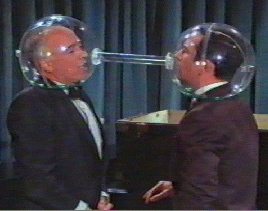Flight Simulator Training
I thought flying and being a pilot would be cool as a child, but was told pilot's can't wear glasses. This turns out to be true only for military pilots. According to FAR Part 61, civilian pilots just need to be correctable to 20/20. In fact, the Naval Academy has recently begun offering PRK to cadets for free, and a surprising number took them up on it.
But of course, I was a snot-nosed-punk in the 80's before vision correction surgery was available and no one pointed out that the 20/20 rule was only for military, so I settled for flight simulators. The first ones were pretty rudimentary, and the ones I recall were all combat. As computers doubled in power every 18 months, the simulations got better and more complex. When Falcon 3.0 came out in 1991 by MicroProse, it included a manual that was over 250 pages thick including how to fly a pattern for landing and combat tactics. Falcon 3.0 remained the ultimate in flightsim realism for years. Although MS had already released 4 versions of their Flight Simulator game, it wasn't until 2000 that they developed a popular following.
I played with it a little, but didn't really get hooked until 2004 ("A Century of Flight") was released. Like many others, I demo'd FSX (2006) and decided to stick with fs2004. As of January 2009, MS announced that they were disbanding the FS team and ending the product line.
The two mainsteam heirs at the moment are X-Plane and FlightGear. X-Plane is more polished and easier to get started, but if you can get FlightGear working, it's free and has gobs of add-ons that are also free. Both have a small selection of training flights and options like weather and terrain imported from official surveys.
For official training, the ASA has their "On Top" program for IFR proficiency, which isn't cheap, but does tie into certified training hardware. You still need an instructor for the time to count and about $5k in controllers.




Seriously, the day I lose my medical, I'm probably getting the whole line of flight controllers and instruments from Saitek. I may still talk myself into it to practice for my Instrument rating.
FS2004 actually had a fairly good tutorial and flying lessons included, not the least of which was Rod Machado narrating the flying lessons. A piece of advice if you start with flight sims is that trimming to hold an altitude without having to push or pull on the yoke/stick is much, much easier in real life than in the simulator.
Spending some time on a good flight sim with a simple aircraft like the ubiquitous Cessna 172 can really help you get some of common misconceptions out of the way before you start burning avgas. Things like adding power if you're coming in too low instead of pulling back is important and easier to learn on a computer in some ways since you are in fear for your life.
There is a huge community for flightsim fans and even online airlines with real people putting in time as virtual ATC. This site is the best resource I've found for files and add-ons for the MS flightsim. There are a number of additional aircraft to download and collections of missions where you fly into challenging airports in difficult weather. But finding training missions is difficult. The ones that came with FS2004 are great, but only up to a point. The IFR missions seem to be a huge leap. I can complete them, but not in any fashion that would be approved by the FAA.
Then while searching the web trying to nail down ILS vs. Localizer approaches, I found this amazing site which is filled with great history and theory of air navigation by Charles Wood and has lessons dressed up as a continuing story where you're a pilot for a small, New England charter service. The site includes files to download with chunks of sectionals approach plates and other forms that you would use just like a real pilot. He also gives you the weather and other MS flightsim settings for each flight. It's not really like the training missions in the program, but in some ways it's better for a real-world pilot or aspiring pilot. That is, one with a computer, MS flightsim and a color printer.
While putting all the link together for this post, I also found "MS Flight Sim as a Training Aid" which looks pretty good, by Bruce Williams which includes a CD with dozens of training flight missions. And a much bigger book, "MS Flightsim X for Pilots Real World Training" by Jeff Van West and Kevin Lane-Cummings that comes in at over 700 pages doesn't include a CD, but directs you to the publishers website to download them.
I haven't tried either yet, but they both look worthwhile.




